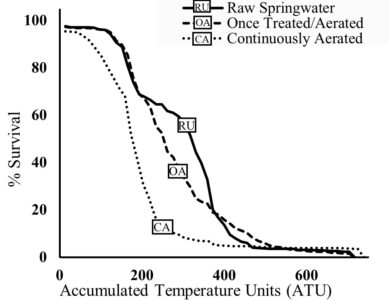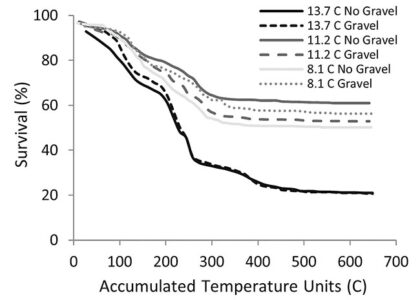
Features
Recirc
Research
Effects of hard water precipitates on early life stage brook trout
July 6, 2023 By John Davidson, Freshwater Institute, with co-authors Brandon Keplinger (WVDNR), Clayton Raines (USGS), Curtis Crouse (FI), and Christopher Good (FI)
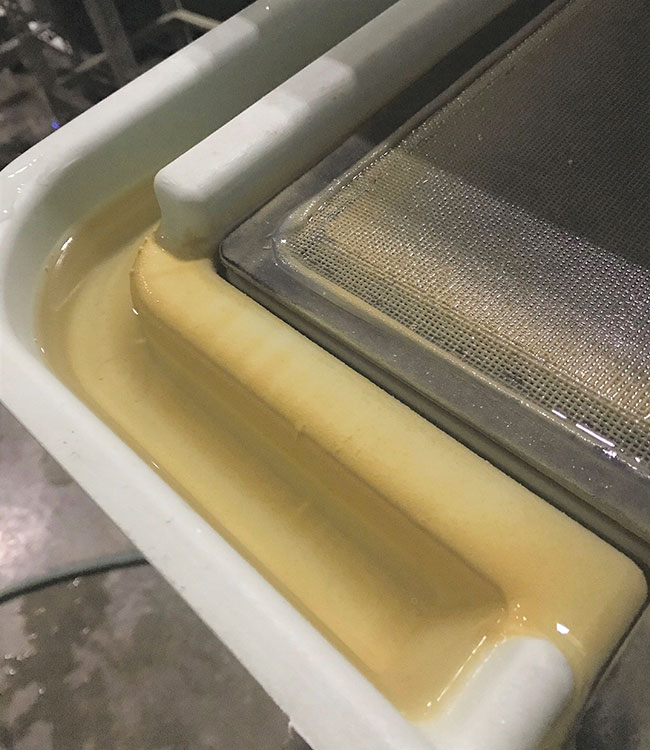 Figure 1a Calcium-rich precipitate adhered to a Heath tray used for these studies
(Photo: Freshwater Institute)
Figure 1a Calcium-rich precipitate adhered to a Heath tray used for these studies
(Photo: Freshwater Institute) The Conservation Fund’s Freshwater Institute (FI) is focused on the research and development of recirculating aquaculture systems (RAS) to facilitate the expansion of sustainable food fish production. However, we have also utilized the controlled environment provided by RAS to supplement trout for recreational angling programs and for fisheries conservation research.
For example, we recently completed a collaborative project with West Virginia’s Division of Natural Resources (WVDNR) to determine if natural hard water precipitates, also referred to as marl, inhibit brook trout egg and alevin survival. Findings from this research, which were published in the Journal of the Southeastern Association of Fish and Wildlife Agencies 1, are guiding native brook trout restoration efforts in West Virginia.
Background
Although the brook trout is the official state fish of West Virginia, native populations have been extirpated from many local streams. Loss of streamside canopy, increasing water temperature, and adverse land use practices, among other factors, have contributed to the Eastern brook trout’s decline 2. In addition, sedimentation stemming from logging, agriculture practices, and runoff has reduced spawning habitat 2 and can inhibit brook trout recruitment through entombment and/or asphyxiation of developing eggs and fry 3. While sedimentation is typically related to anthropogenic factors, hard water environments also produce natural sediments that could cause similar harm to juvenile brook trout. For instance, streams fed by springs from limestone aquifers release carbon dioxide (CO2) across riffles and waterfalls, which increases pH and shifts chemical equilibrium, resulting in the deposition of silty marl precipitate 4. This water chemistry reaction is common in Rockymarsh Run, which flows adjacent to the Freshwater Institute and is one of several hard water streams in the Eastern Panhandle of West Virginia where native brook trout once thrived but are now absent 5. Curiously, Rockymarsh Run maintains suitable year-round water temperatures and has microhabitats with upwelling springs and gravel substrate that are ideal for spawning 6 suggesting that this stream should otherwise sustain brook trout.
Research capacity
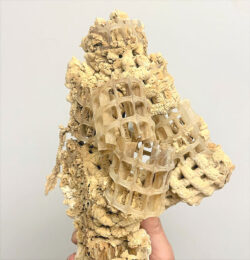
Figure 1b Calcified media removed from a gas conditioning column at the Freshwater Institute (Photo: Freshwater Institute)
With this background in mind, FI and WVDNR scientists hypothesized that calcium-rich marl could, in part, limit juvenile brook trout survival in Rockymarsh Run and similar hard water environments. Moreover, the Freshwater Institute has ideal conditions to test the impact of hard water precipitates, including source water from a karst-geology spring with hardness >300 mg/L as CaCO3 and gas conditioning technologies that constantly remove dissolved CO2. Crystalized calcium commonly coats the submerged surfaces of fish tanks and hatching trays at FI (Fig. 1a). Under extreme circumstances, packed media within gas conditioning columns has morphed into stalactite-like structures (Fig. 1b). Observationally, precipitate formation begins in FI’s RAS at a pH of approximately 7.7. This is corroborated by the Langelier Saturation Index, which considers input values for water hardness, pH, and temperature to determine the scaling potential of a water source.
Study 1
Methods – Utilizing these resources and our understanding of this water chemistry reaction, two controlled studies were conducted. During the first study, brook trout eggs obtained from a local hatchery were fertilized and stocked in 15 replicate hatching trays receiving water from three aeration treatments (n=5), including raw untreated (RU) water without marl precipitate, once-aerated (OA) water that produced very little precipitate, and continuously aerated (CA) water with pH >8.0 that produced copious amounts of marl. Average water temperature was maintained between 13.5 and 14.5°C to match conditions at a WVDNR hatchery where heritage strain brook trout eggs are hatched for reintroduction. A thin layer of gravel was also placed in each tray to simulate a natural environment. Additionally, extra brook trout eggs were kept in a chilled Heath tray system maintained at 8°C without gravel where standard salmonid hatching protocols were followed. This system, which is prone to calcium scaling, also produced significant amounts of marl.
Results – Cumulative brook trout survival was negligible for all three water types after 53 days and >700 accumulated temperature units (ATU). However, mortality occurred faster in CA water where marl coated egg surfaces (Fig. 2), and no surviving alevins remained. Interestingly, extra eggs maintained in the marl-producing hatching system at 8°C demonstrated >50% survival. The results of this study were surprising given WVDNR’s success hatching heritage strain brook trout at maximum temperatures of 14.9°C, albeit in softer water with hardness <80 mg/L as CaCO3. Therefore, a second study was conducted to investigate whether gravel presence or water temperature may have contributed to the general mortality trend.
Study 2
Methods – Brook trout eggs from the same provider were fertilized and stocked in Heath-tray stacks maintained at 8.1, 11.2, and 13.7°C via independent chillers. Replicate trays within each system either included gravel or were maintained without this substrate (n=3). A coating of marl was created in all systems due to continued aeration and maintenance of pH levels >7.9.
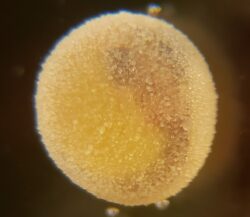
Figure 4 Microscope photograph of a brook trout egg covered with marl precipitate. (Photo: Freshwater Institute)
Results – Increased prevalence of alevin deformities and significantly lower survival were observed at 13.7°C versus 8.1°C and 11.2°C, but gravel inclusion did not negatively impact juvenile brook trout (Fig. 3). Further, the mortality trend observed at 13.7°C notably mirrored that of the CA treatment during Study 1 (Fig. 2), which utilized similar temperature and produced marl. Although survival was higher during Study 2, potentially harmful effects of marl were suspected due to the observed adherence of precipitate crystals on the surface of eggs (Fig. 4). This condition, which may have interacted with warmer temperatures, likely impeded oxygen and nutrient diffusion across the egg membrane.
Conclusions
These experimental results provided important information to biologists at the WVDNR and USGS regarding habitat suitability for brook trout. This research suggests that hard water precipitates likely create an additional challenge for juvenile brook trout survival in karst-geology streams, particularly at temperatures >13.7°C. It’s important to note, however, that in a natural setting, brook trout will select ideal spawning habitats with preferred temperatures. And although karst-geology streams are usually dominated by stretches with significant sediment accumulation, these waters typically have marl-free zones that are suitable for spawning. Rockymarsh Run, for example, is fed by at least 16 upwelling springs that create microhabitats characterized as having cooler water and gravel substrate 5. To culminate this project, WVDNR deemed Rockymarsh suitable for brook trout reintroduction, and heritage strain fingerlings were recently stocked in this stream with the hope that these fish will survive and reproduce in these microhabitats.
References
- Davidson, J., Raines, C., Crouse, C., Good, C., & Keplinger, B. 2023. Evaluating brook trout egg and alevin survival at different temperatures in simulated karst environments with marl sedimentation. Journal of the Southeastern Association of Fish and Wildlife Agencies 10, 27–35. https://seafwa.org/journal/2023/evaluating-brook-trout-egg-and-alevin-survival-different-temperatures-simulated-karst
- Hudy, M., Thieling, T.M., Gillespie, N., & Smith, E.P., 2008. Distribution, status, and land use characteristics of subwatersheds within the native range of brook trout in the eastern United States. North American Journal of Fisheries Management 28, 1069–1085.
- Franssen, J., Blais, C., Lapointe, M., Bérubé, F., Bergeron, N., & Magnan, P. 2012. Asphyxiation and entombment mechanisms in fines rich spawning substrates: experimental evidence with brook trout (Salvelinus fontinalis) embryos. Canadian Journal of Fisheries and Aquatic Sciences 69, 587–599.
- Herman, J.S. & Hubbard Jr., D.A., 1990. Travertine-marl: stream deposits in Virginia. Commonwealth of Virginia, Charlottesville, Virginia.
- Petty, J.T. & Merriam, E., 2010. Rockymarsh Run report. West Virginia University Division of Forestry, Natural Resources, and Design, Morgantown.
- Webster, D. A. & Eiriksdottir, G. 1976. Upwelling water as a factor influencing choice of spawning sites by brook trout (Salvelinus fontinalis). Transactions of the American Fisheries Society 105, 416–421.
Print this page
Advertisement
- Russia scales up recreational campaign in Siberia
- 5,000 fish cages to take Philippine milkfish industry to next level
